The Changing Face of Doctor Who
The hallmarks of Doctor Who are now well known, but imagine, back in November 1963 – the day following Kennedy’s assassination – hearing that theme tune for the first time over the swirling black-and-white titles, following two school teachers as they burst into the time machine that’s bigger on the inside, and hearing the sound of the TARDIS take-off. It’s magical.
Today, almost every episode that exists is available on DVD, but I had to wait till the mid-1980s to see that first episode when it was shown at a convention. There were people in tears.
So what has kept this stalwart of British science fiction ploughing-on for over fifty years, building-up a loyal army of fans in its wake? I believe there are two reasons.
- The premise of a new and totally different story every few weeks has allowed the series to change-with-the-times.
- And the periodic changing of the lead actor has retained a freshness to a now established format.
Two reasons: The changing face of Doctor Who…
William Hartnell, 1963 – 1966: HISTORY.
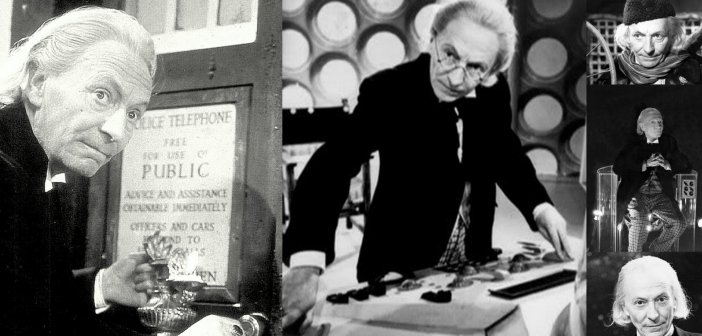
Initially, the programme was intended, in part, to be educational. The futuristic stories were punctuated with historical dramas with the TARDIS crew visiting the likes of the Romans, Aztecs, Crusaders and the French Revolution. Viewers today would soon grow weary of the seven episodes the Doctor spent trudging through central Asia with Marco Polo. The production team soon realised that the science fiction element was more popular, with the Daleks proving an instant success. Having a History and a Science teacher on board now seems contrived, but they were a relatively quick and useful source of information for a drama already weighed-down by explanatory dialogue. Their pupil, Susan, was the hook to snag the child audience, and with them, the rest of the family. She was a teenager, but from another world, caught-up in a new adventure every four weeks or so, neatly divided into twenty-five minute sections. And with her came her Grandfather: the Doctor.
William Hartnell, then in his mid-fifties, played a wise but irritable alien wanderer, cut off from his own people. Who these people were was unknown at this time – or probably not even considered. But not revealing the Doctor’s background added more intrigue to this innovative new show. And this mystery justified the title: Doctor Who?
Patrick Troughton, 1966 – 1969: MONSTERS.
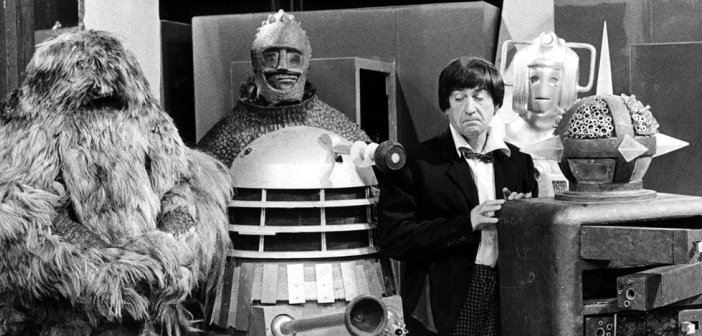
When Hartnell retired from the programme due to ill health, that could have been the end. But another innovation – Regeneration – allowed a change of lead actor, although it wasn’t called that until later. And with that change, the less popular historical element was phased out of the programme. Patrick Troughton’s scatty tramp façade hid a shrewd Doctor who reigned over a three-year succession of monsters.
The first Doctor had encountered the cloth-faced Cybermen and of course the Daleks (so immediately popular that they appeared in almost a quarter of Hartnell’s episodes). The second Doctor faced the Daleks twice, and the Cybermen, now with metal faces, four times. He also encountered the Ice Warriors and the Abominable (robot) Snowmen twice each, as well as a string of other creatures culminating in a confrontation with his own race.
My first clear memory of the show is from The Mind Robber where a computer controls a realm of fictional characters. I can remember being frightened by the statue of Medusa as her snake-hair begins to writhe above her stone face.
The Doctor is revealed to be a Timelord and put on trial for meddling (i.e. thwarting monsters) in the affairs of other people and planets. Found guilty, his sentence is to be exiled to Earth and look like Jon Pertwee.
Jon Pertwee, 1970 – 1974: ACTION.
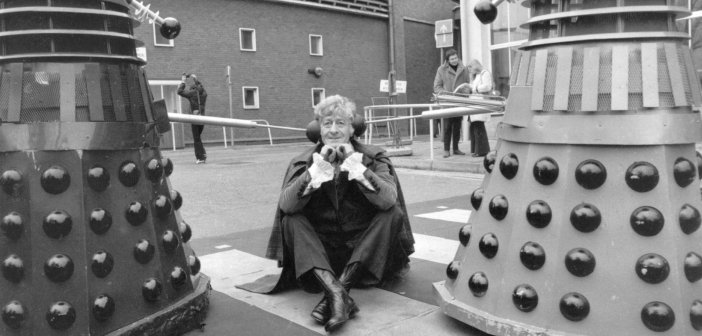
Though some of the monsters may resemble green-painted bubble wrap, Doctor Who is a relatively expensive show to produce. Part of the problem being a new location (with attendant scenery and costumes) for each story. The solution? Have the Doctor stuck on present day Earth and bring the bubble wrap to him.
Jon Pertwee played a James Bond style Doctor with a frilly shirt, velvet jacket and an open-topped yellow roadster called Bessie. The programme looked relatively impressive, with more outside filming than before and it was transmitted in colour for the first time. It also became more physical with the introduction of the Doctor’s ‘Venusian Aikido’ and an obligatory stunt scene incorporated into most stories. ‘Action by Havoc’ appeared regularly in the closing credits. This was also the main UNIT era, the army-like organisation with their guns and explosions.
Though many people disagree with me, I felt this to be a low point of the series. With the Doctor stuck in one location, the Earth became the target of one invasion after another after another. And, as if to justify this planet’s popularity, the Doctor was given a nemesis: the Master, who, was repeatedly revealed as the ‘surprise’ instigator of many invasions.
Timelord lore was given a boost with the 10th anniversary story, which also featured Hartnell and Troughton battling against the stellar engineer who gave them the ability to time-travel. And the Doctor’s home world is finally given a name: Gallifrey.
Tom Baker, 1974 – 1981: CLASSICS.
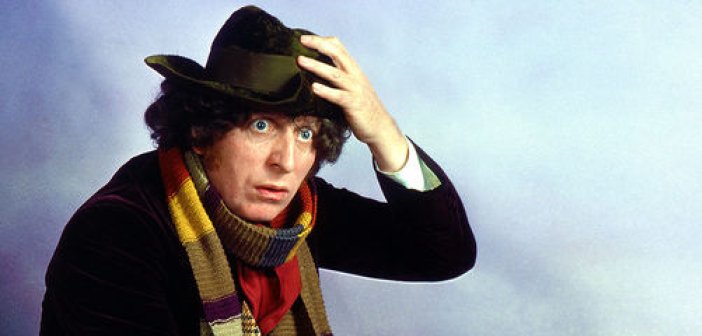
The Tom Baker era spanned seven years and consequently was one of contrasts. Stunt-men falling onto convenient cardboard boxes were phased out and horror crept in, with kids purportedly watching from behind the safety of the sofa. The influence of old Hammer films could be seen in Who-ised versions of Frankenstein, The Mummy and Phantom of the Opera. Mary Whitehouse of the Viewers and Listeners Association had questions raised in parliament, concerned about the programme’s suitability for younger viewers. As a consequence the series veered towards humour with variable degrees of success.
To most people who remember the programme prior to its 2005 re-boot, Tom Baker with his floppy hat, long scarf, robot dog and jelly babies is the Doctor. Behind the buffoonery was a knowledgeable brooding alien, the classic Doctor who presided over some classic stories – and some spectacularly duff pantomimes.
It was one of Tom’s final stories – Warriors’ Gate – that transformed me from a regular viewer to an avid fan. Written by thriller author Stephen Gallagher, it was an opaque tale with no definitive villain and where cause-and-effect were shown out of sequence. I was spellbound, and bought the novelisation to experience it all a second time. From then on I was hooked.
Peter Davison, 1981 – 1984: VULNERABILITY.
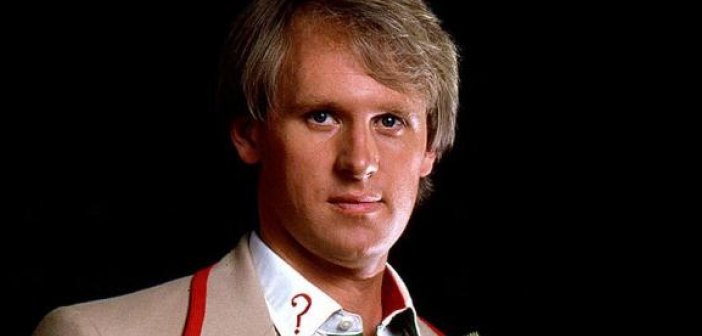
Still in his twenties when he was cast, Peter Davison was a more ‘human’ vulnerable Doctor than his predecessors. Dressed in cricketing garb, with a quirky stick of celery and half-moon specs, he looked after a succession of strays in a comparatively crowded TARDIS, whittling down to the traditional single companion for only his final story. Though, of course, the bad guys are always defeated, some of Davison’s victories came at a cost. He causes the Great Fire of London. When Tegan asks if she is free of the Mara (a snake-like force of evil that had invaded her mind) the Doctor doesn’t answer – and the Mara then returns the following year. His companion Adric is blown apart by the Cybermen, and the 5th Doctor allows himself to be poisoned when there is only enough antidote for his friend Perri.
For the first time, the show itself seemed vulnerable too. At the whim of Alan Heart (Controller BBC1) it was removed from its customary Saturday transmission slot and shown in the early evening twice weekly. Even the traditional 25 minute episode format was tampered with. The 20th anniversary episode ‘The Five Doctors’ ran for an hour and a half, and Davison’s Dalek story was transmitted in two 45 minute slots – the format used by the current series.
Despite the unsettled feeling due to these changes, by this point the show was now established as the sci-fi family-friendly drama we still see today. Davison’s era is my personal favourite. The stories became more thoughtful and high-concept, and it’s a pity the special effects of the 80’s couldn’t match the ideas they tried to represent. Davison’s final story ‘The Caves of Androzani’ is consistently voted the best Dr Who story (so far!) in opinion polls.
Colin Baker, 1984 – 1986: HIATUS.
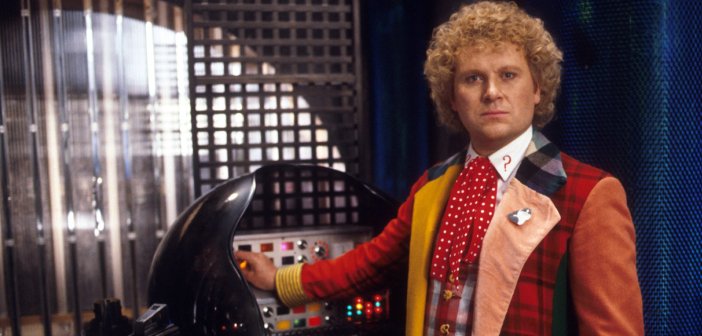
Through no fault of his own, Colin Baker’s era begins the rot which led to the eventual cancellation of the programme for 15 years. Colin’s Doctor was a brash, self-centred egotist – nothing wrong with that as a character, but it riled new BBC1 controller Michael Grade. The Saturday slot was re-instated but the format altered again to 45 minute episodes. The new Doctor’s willingness to harm other characters to save himself, once again, raised the question of violence in the programme. Decrees were passed down to make it more family-friendly, it would be shunted to a weekday slot again and cut into 25 minutes episodes. Worst of all though, ostensibly to save money, (to pay for new soap Eastenders, Daytime and Breakfast TV), Doctor Who’s production was put back 18 months to a new financial year. This caused rumours that the series was to be cancelled, front-page tabloid outrage and the release of a ‘Doctor in Distress’ protest single. The stories originally planned for Colin’s second year were scrapped.
Eventually returning in the autumn of 1986, the production team had decided on a long story arc to cover all 14 episodes of the series: ‘The Trial of a Time Lord’. This bold step was undermined by the death of author Robert Holmes who wrote the first four episodes and the first of the concluding two episodes of the trial. Holmes’ final episode was never written, script editor Eric Saward fell out with the producer John Nathan-Turner and resigned, and the end of the epic trial was ‘salvaged’ as 25 minutes of gobbledygook nonsense.
Michael Grade, more villainous than the Master, must have rubbed his hands together in glee, as he insisted that the Doctor be re-cast.
Sylvester McCoy, 1987 – 1989: DEVIOUSNESS.
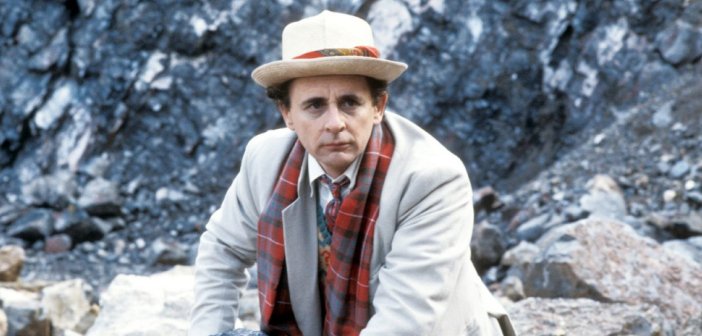
Seventh Doctor, Sylvester McCoy, is arguably the most interesting. He was known as a comic actor, but his Doctor soon developed into darkness and deviousness. Instead of landing at random and having adventures, this Doctor deliberately sought-out trouble with a view to righting wrongs. He lay long-term plans, secretively using characters and companions like props to achieve his goals.
Few people may appreciate his role though as the show was moved again. Michael Grade had it shown just after 7:30 on a Monday, against ITV’s most powerful programme, Coronation Street. Unsurprisingly Doctor Who’s ratings plummeted and Jonathan Powell, new BBC1 controller, suspended the programme.
The final story, ‘Survival’, of what is now termed the ‘classic series’ was broadcast in December 1989.
The show’s 25th anniversary fell in the McCoy era and this ‘silver’ anniversary was suitably celebrated with another return of the Cybermen. And with a harking back to its roots, the question of who the Doctor actually is was raised: Doctor Who? – a question still to be answered.
Paul McGann, 1996: MOVIE.
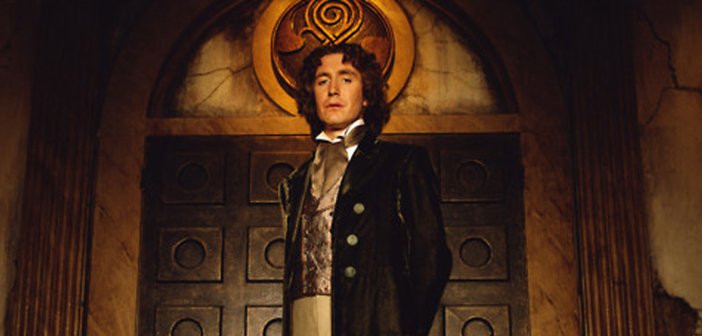
With the programme no longer being made by the BBC, Doctor Who switched formats entirely and survived in books and audio adventures. Virgin Books published two series: the New Adventures featuring the 7th Doctor and companion Ace, and the Missing Adventures featuring earlier Doctors. When these proved successful, the BBC grabbed back their rights and produced their own versions of these series.
Audio company Big Finish produced plays featuring the Doctors, companions and monsters from the series and have just secured the rights to continue producing Doctor Who audios until 2020.
Meanwhile, the BBC were casting about for an independent company to take-on the television programme. Eventually Universal & Fox networks produced: Doctor Who – The TV Movie.
More changes for the programme, both in format and style: it wasn’t difficult to tell that this was an American production. McCoy regenerated into McGann, during a gangland shoot-out in San Francisco, the Doctor dashes about on a motorbike and he kisses his companion for the first time. Broadcast first in Canada, then the US, the movie was eventually shown in Britain in May 1996 – to some acclaim.
It is hard to judge Paul McGann on this one canon performance. He appears just eccentric enough and ‘British’ enough to be the Doctor and claims to be half-human (on his mother’s side). But his character seems out of place having been transported into a grand-scale Americanised version of reality where continuity is flouted and the regenerated Master wears cool shades.
Though viewing figures in Britain were good, the all-important US audience was poor, scuppering any hoped-for plans for a follow-up series.
John Hurt, 2013: WAR.
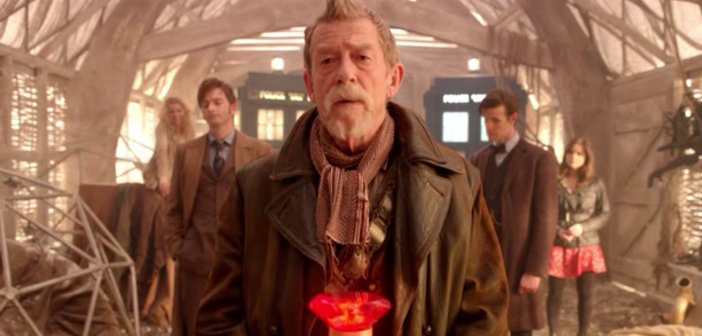
OK, this is where continuity leaps backwards and forwards in time like the TARDIS.
Like his predecessor, John Hurt appears (mostly) in just one story, the complication being that chronologically he slots in between McGann and Eccleston, but his existence is only revealed towards the end of Matt Smith’s tenure. This is the battle-scarred Doctor responsible for destroying the Daleks and his own race, the Timelords, in the great Time War.
He should have been dark, determined, and ruthless. And John Hurt manages elements of this. But the story must also entertain. Teamed with Tennant and Smith (Doctors from his future), the ‘War Doctor’ is obliged to join in the multi-Doctor banter and bickering, giving his 50th anniversary episode a humour which seems at odds with his premise.
The clever idea of telling stories out of sequence, is typical of Steven Moffat, whose tangled story arcs were to delight or frustrate viewers in the Matt Smith era.
But I’m getting ahead of myself.
Christopher Eccleston, 2005: REVIVAL.
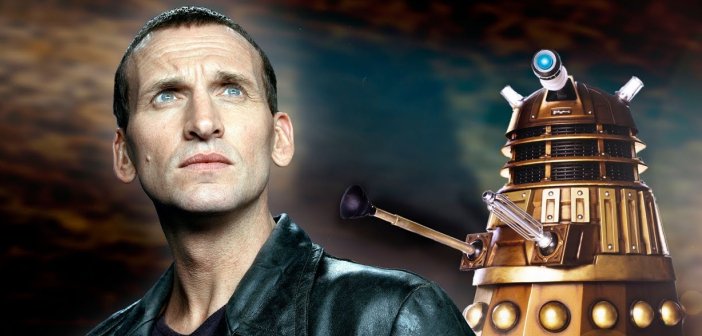
Back onto a straighter time-line, and a good fifteen years since ‘Survival’, Christopher Eccleston spearheaded the return of Doctor Who to TV screens.
A succession of BBC commissioners had shown interest in reviving the programme. An animated ‘Scream of the Shalka’ was produced for the 40th anniversary, and, after a suggested film was never made, an enthusiastic Russell T Davies was approached to write and produce a new series.
The format was of 45 minute self-contained episodes, with a few two part stories, and once again shown on a Saturday.
This Doctor was the ‘last of the Timelords’, a lonely wanderer whose adventures were shadowed by his role, as yet unrevealed, in the Time War. He was joined by the popular former singer Billie Piper as Rose with other semi-recurring members of her family.
Daleks and Autons returned, that theme tune was re-imagined, and the TARDIS interior redesigned whilst retaining the central console and time-rotor column. It was the same old programme, but sparkly new. The special effects could now keep-up with the writers’ imaginations, the scenery didn’t wobble and the monsters weren’t obviously men in rubber suits – indeed the most creepy were ordinary people wearing gas masks.
Viewing figures proclaimed this a successful revival and it even got praise from Michael Grade, now on the board of governors. A Christmas special and a second series were announced.
David Tennant, 2005 – 2010: SPECIALS.
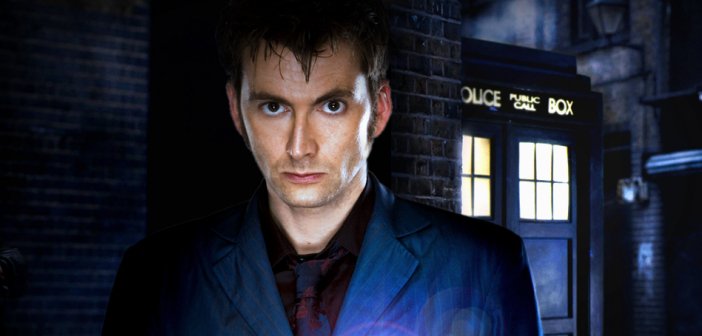
After a blazing regeneration, Tennant was introduced in a special Christmas episode. This prestigious slot has been maintained ever since and is testament to the show’s current popularity.
Just when the series had settled down as the family-friendly 45 minute SF adventure show, it changed again. From the end of 2008 till the beginning of 2010, Doctor Who became a string of disjointed spread-out ‘specials’. These feature-length episodes replaced the traditional format and allowed Tennant to appear as Hamlet in Stratford.
Tennant’s was a Doctor who relied on his companions to humanise him, they reined him in when he became too ruthless in his desire to right wrongs. Indeed, for two brilliant episodes he became human partly to prevent his retribution on a family of villains.
Other ‘specials’ appeared during this era in the form of spin-off series. Torchwood (an anagram of Doctor Who) catered for the adult end of the market debuting in 2006, and a year later The Sarah Jane Adventures appeared, aimed at the younger audience. Characters and situations linked the three programmes together culminating in 2008’s ‘Journey’s End’ which featured just about every recurring character since the show’s re-launch.
Russell T Davies’s tenure as writer/producer came to an end when Tennant left the show. Of the 60 episodes of his tenure, Davies impressively wrote just over half of them. With a complete change of cast, Davies handed the reins over to Steven Moffat.
Matt Smith, 2010 – 2013: ARCS.
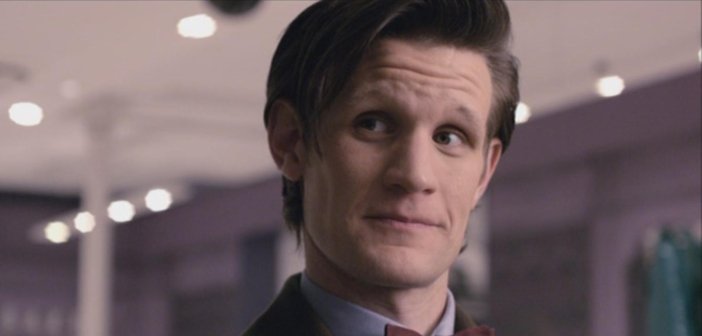
Links between stories have appeared throughout the history of the series, most notably in the ‘Key to Time’ season and ‘Trial of a Timelord’, with Bakers Tom and Colin respectively. But Matt Smith’s timeline is riddled with them. I know of people who were confused by unexplained events in some stories, but all is explained to those who watch to the end of a season. Where previous links (e.g. the Doctor-Donna reference by the Ood, or the Doctor’s severed hand appearing in several stories) may have been un-planned contrivances by the production team, Moffat had obviously thought-out and arranged his story arcs well in advance.
The crack in Amy’s bedroom wall appears in stories over and over again, before and after it is revealed to be caused by the Doctor’s exploding TARDIS. Madam Kovarian appears to peer through hatches into Amy’s adventures long before the truth is finally revealed. Clara is a recurring mystery character until it is shown how she can be in so many separate parts of the Doctor’s timeline.
Then there is River Song… River and the Doctor meet repeatedly, but each time the Doctor is a little older and River a little younger. The last time she met him, was the first time he met her – and she ‘died’. She is an assassin brought up to kill the Doctor. They eventually marry and she is revealed to be the grown-up daughter of companions Amy and Rory. All this planned beforehand as evidenced by her name, deliberately chosen to link her with Amy Pond (always called Pond by the Doctor, even after her marriage).
Confused? Then you weren’t paying enough attention. There were also some high-concept aliens to cope with. Moffat’s Weeping Angels are stone while you look at them but move when unobserved. The Silence invaded Earth but nobody knew because they were deleted from the memory as soon as you turned away from them. There is also the War Doctor, a previously unsuspected regeneration – see the John Hurt section above.
Matt Smith’s Doctor takes all this in his stride. He looks young but has the wisdom of his past selves to draw on. He eventually dies of old age – but is granted a new cycle of regenerations by the Timelords, through that crack in the wall.
Peter Capaldi, 2014 – current: BRAVE (so far…).
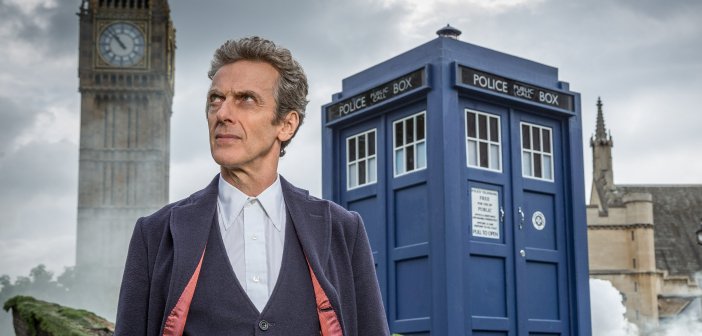
Currently filming his second season as the Doctor, Peter Capaldi has so far appeared in 13 broadcast stories. His is an ‘older’ Doctor who does what he feels is necessary to resolve problems, and if that ruffles feathers or social convention he seems totally unaware of this.
The 2014 season was generally met with approval with an average audience of around 7 million and earning an Audience Appreciation Index in the 80s (which is considered excellent).
I felt the stories were mixed. A couple were outstanding: ‘Listen’ a never-seen-monster-under-the-bed story which could just as easily be fear and imagination, and ‘Flatline’ where Clara takes on the role of ‘The Doctor’ to battle two-dimensional creatures in our three-dimensional world. Other stories fared less well, or were so far-fetched as to appear ridiculous.
The season’s story arc (yes, there had to be one) is a brilliant concept and surprisingly brave. The character ‘Missy’ appears in several stories to greet the recently dead into the ‘Promised Land’. It transpires in the final episodes that she is a newly regenerated Master in league with the Cybermen. They are converting the dead into Cybermen and have engineered the whole concept of the afterlife as part of their plan. Controversial, and I’m surprised it didn’t draw a mass of complaints. I don’t think the production team would have got away with that in 1963 in their creaky 25 minutes of black and white historical drama.
FUTURE
The programme has evolved almost beyond recognition, adapting to a changing audience, viewing tastes, technological advances and the whims and policies of programme controllers.
In another fifty years the Doctor might well be a woman, it will be broadcast direct to mobile phones, in 3D, and with immersive audience participation. I just hope that they keep that theme tune and that question: Doctor Who?
Featured Image Credit: telegraph.co.uk

